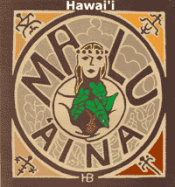An Uncounted U.S. Nuclear Testing Hawaiian Casualty
An Uncounted U.S. Nuclear Testing Hawaiian Casualty
Between 1946 and 1963, while the United States tested nuclear bombs in the Pacific, hundreds of civilian construction workers were lured to such places as Eniwetok in the Marshall Islands in the western Pacific and Johnston atoll located 850 miles southwest of Honolulu with the promise of high wages in a safe working environment. Among those, in the 1960s, was my brother-in-law. In his thirties, married, father of young children, he went down with a group from Hawai’i. His goal was to earn enough to build a nice house where his children would “never have to be ashamed to bring their friends home.”
There was little recreation available, and some workers blew their big money on drinking and gambling, nut he and his companions resolutely saved their pay for their families back home. Instead, they enjoyed the simple pleasures of fishing. They were allowed to fish, but they had been told not to eat what they caught. That made no sense to the Hawaiians. They spent their leisure time fishing, cooking on the beach, and eating together.
After his first year, my brother-in-law came home proudly, with enough money saved to build the outside shell of his house. Friends and family helped raise the structure, and he moved in with his wife and children. He was happy, even when we teased him about the strange blisters on his face. They had been diagnosed by the doctor down there as “sunburn.” Not to worry. “What kind Hawaiian you?” we teased. “How come you get sunburn?”
He signed up for another year, then returned home again with enough money to complete the interior of his house. He looked tired, and he had lost a lot of weight. One sister-in-law and I looked at each other with concern. “He doesn’t look good. And remember that rash he had last time! You think he get radiation sickness?” We refrained from worrying the rest of the family with our suspicions, but quietly urged him not to go back. He brushed us off. “One more time. Gotta get furniture for my kids.”
After his third year he came home skin and bones. Barely abler to walk. Now it was obvious to the rest of the family what we had suspected. Shocked by his appearance, frightened, then angry about the doctor’s “sunburn” diagnosis, they took him to a “good” doctor, who confirmed our fears. Radiation sickness, Leukemia.
He died a few months later in the nice house with the nice furniture, his family around him, having given them his best.
Two of us tried to persuade his widow to file a complaint. To demand compensation. Anything! But she would not. Bitterly, she said, “for what? That’s not gonna bring him back?” Generations of subjugation had taught her that “making waves” only brought trouble back on one’s self. To challenge the United States nuclear program was beyond her capability, and she implored us not to make waves.
Later, we learned that one of my brother-in-law’s fellow workers on Eniwetok had also died of leukemia. We never heard of any others, but we wondered….
Hundreds of thousands of civilians have been sickened or killed over the years as a result of America’s nuclear testing. How many cases remain uncounted because they were never documented as such?
How many more will occur?
–MS, 2018
